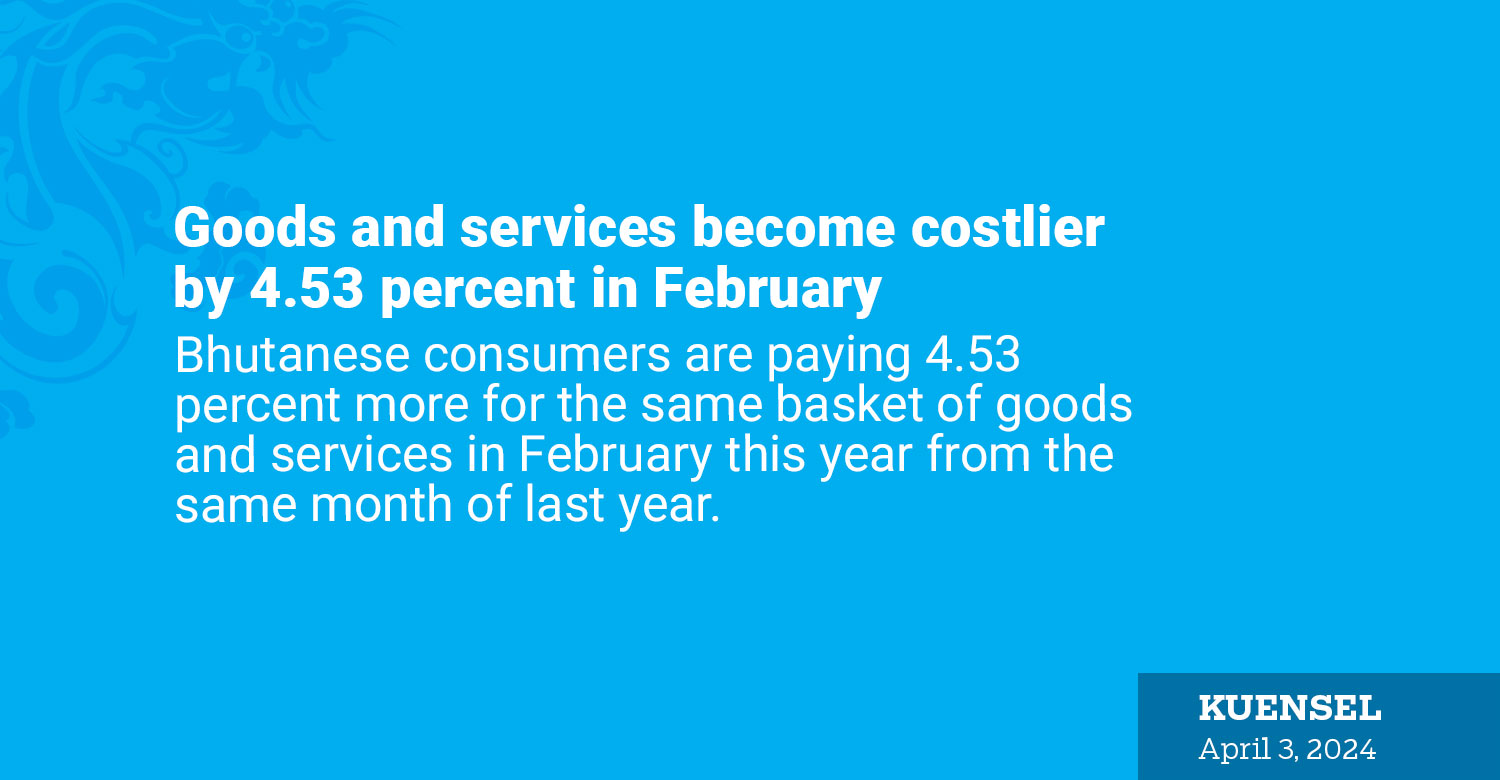
Bhutanese consumers are paying 4.53 percent more for the same basket of goods and services in February this year from the same month of last year.
The value of the Ngultrum has been deprecating with the value of Nu 100 in February this year worth only Nu 56.4 in December 2012.
Looking at the month-over-month inflation, the price of goods measured in consumer price index (CPI) has increased by 0.12 percent from January this year.
Inflation in February is higher than the pre-pandemic level of 2.73 in 2019, however, it was below the Royal Monetary Authority’s (RMA) upper threshold of 6 percent. The average inflation in 2020 was reported at 5.63 percent and 7.35 percent in 2021.
Food prices increased by 6.08 percent and non-food prices by 3.22 percent in February this year compared to February of last year.
Price index for food and non-alcoholic beverages increased by 6.39 percent and for alcoholic beverages and betel nuts increased by 1.94 percent during the same period. In the non-food category, inflation was mostly driven by housing and utilities and health recording indices at 9.7 percent and 8.02 percent respectively.
This was followed by clothing and footwear at 5.75 percent, furnishings and household’s equipment at 3.93 percent, restaurant and hotels at 2.88 percent among others.
However, there was a decline in transport prices by 0.98 percent because of fall in prices of petrol and diesel and communication by 7.08 percent respectively.
Last year, the prices of goods and services increased by 4.23 percent from 2022, a drop of 1.41 percentage points compared to 5.64 percent in 2022. This was mainly because of a lower rate of increase in the non-food items by 4.44 percent compared to a 7.10 percent increase in 2021.
In 2023, health services recorded the highest increase with 12.47 percent and lowest increase was recorded for transport with 0.85 percent. However, communication prices decreased by 1.06 percent.
The CPI for alcoholic beverages and betel nuts increased by 3.46 percentage points, and housing and utilities increased by 3.11 percentage points. Transport saw a huge decrease by 11.74 percentage points from 2022 to 2023.
Given that over 80 percent of Bhutan’s imports come from India, Bhutan inflation closely tracks inflation in India. Therefore, any fluctuations in Indian inflation directly impact the consumption basket of the country. The RMA stated that the inflation targeting monetary policy of the 4 plus or minus 2 percent range of the Reserve Bank of India, to some degree, safeguard price stability in Bhutan and cushion the inflation volatility.
The central bank anticipates inflation to increase to 5 to 6 percent in this fiscal year 2023-24.












